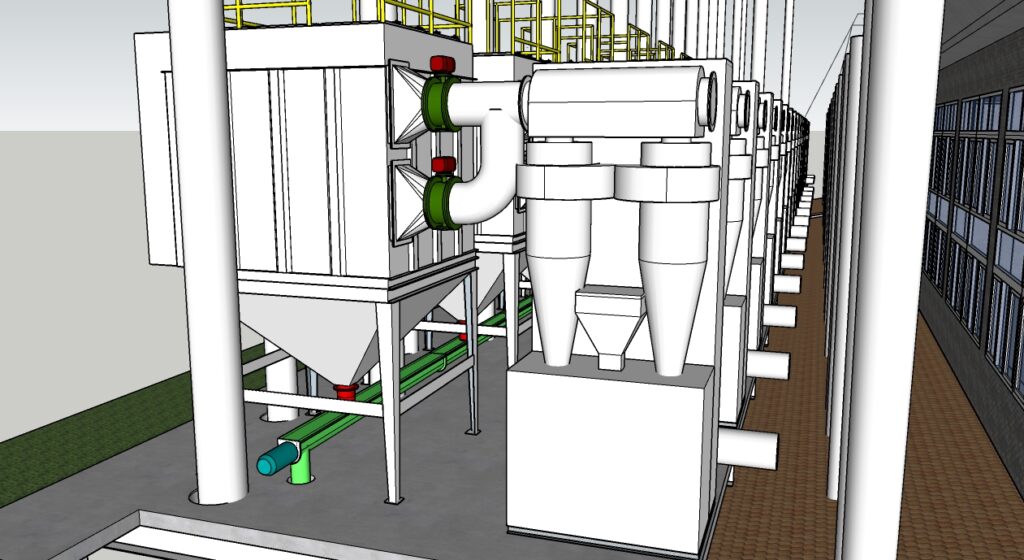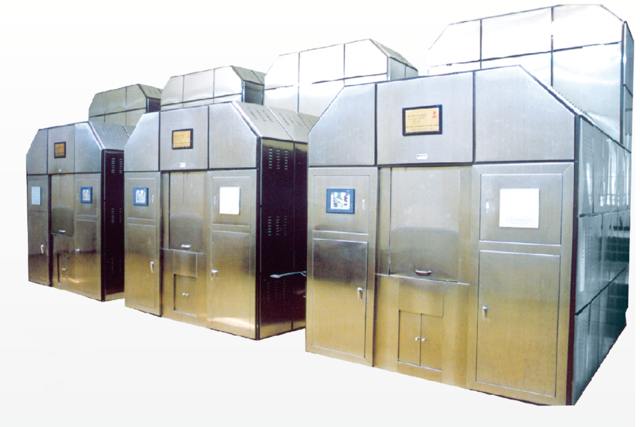1. What are the Technological Innovations in Cremation Furnace Structure?
(1) Increasing the Volume of the Primary Combustion Chamber
Conventional combustion chambers are typically box-shaped. To enhance combustion conditions, structural modifications are needed in the primary combustion chamber to create a rounder, more arched design. This adjustment shifts the flow from direct current combustion to a swirling flow, which improves heat transfer within the chamber, reduces heat loss through the walls, and establishes a heat exchange system between the combustion system, chamber lining, and the remains. The volume of the primary combustion chamber should be carefully calibrated to expand the inner wall area without increasing overall chamber size, thereby optimizing heat exchange and improving thermal efficiency. An ideal volume for the primary combustion chamber ranges from 1.4 to 1.5 cubic meters.
(2) Adding a Secondary Combustion Chamber
The secondary combustion chamber must be more than just a name; it requires sufficient volume and an adequately powered burner. A volume ratio between the primary and secondary chambers of about 1:0.7 to 1:0.8 is optimal to extend the residence time of unburned gases in the secondary chamber, ensuring full combustion of the exhaust gases.

(3) Strategic Air Duct Arrangement
Air ducts should be strategically positioned throughout the furnace: at the bottom and top of the primary combustion chamber, along the lower and upper sides of the primary combustion chamber, and within the secondary combustion chamber and flue. The air ducts in the upper portion of the primary chamber should avoid direct contact with the furnace walls, and opposite-side ducts should not align directly. In many current cremation furnace designs, airflow blind spots lead to incomplete combustion, resulting in black smoke during explosive combustion events.
(4) Proper Flue Sizing
The flue’s cross-sectional area outside the combustion chamber should not be too narrow to prevent excessive gas flow speed, which could cause air surges and compromise safety.
(5) Effective Ash Outlet Design
Ash outlets should be installed in multiple locations, leaving no blind spots to ensure clear pathways and prevent increased internal resistance.
2. What are the Innovations in Cremation Furnace Manufacturing?
(1) Enhanced Furnace Construction Quality Control
Construction quality should follow design specifications and masonry standards strictly, with precise dimensions and tolerances. The furnace walls and linings must be sealed to prevent leaks, and gaps between refractory materials should not allow air passage. The furnace structure must be robust, with gas valves and connections secure, and fuel supply cutoffs functioning reliably, particularly in flame-out situations. There should be no leakage or cracks in the oil, air, and heating pipes, and components like fuel nozzles, pressure, and flow should function normally to ensure optimal sealing of the entire furnace.
(2) Using New Furnace Materials
The furnace lining should provide adequate structural strength and thermal resistance while maximizing insulation and minimizing retained heat. Relying solely on thicker furnace linings to reduce external wall temperatures increases heat retention and costs. Using refractory fibers in the insulation layer reduces heat dissipation through furnace walls, enhancing thermal insulation. Applying high-temperature, high-radiation coatings inside the furnace promotes radiative heat transfer and is an advanced energy-saving technique.
3. How Can Existing Cremation Furnaces Be Technologically Upgraded?
(1) Emphasizing Multi-Faceted Technological Upgrades
Upgrades in various areas are essential, such as in preheating technology for oxygen-enriched air. Currently, most domestic manufacturers place the preheating pipes between the primary and secondary chambers to utilize residual heat. However, installing heat exchangers within the flue or the secondary chamber’s exhaust outlet is more effective. Placement between chambers hinders quick temperature increases in both chambers, contributing to the production of harmful substances, including dioxins.
(2) Increasing Investment in Core Energy-Saving and Eco-Friendly Technologies
Efforts to accelerate cremation furnace technology upgrades are essential. Greater investment and increased innovation capacity are needed to support the evolving needs of the funeral industry.

